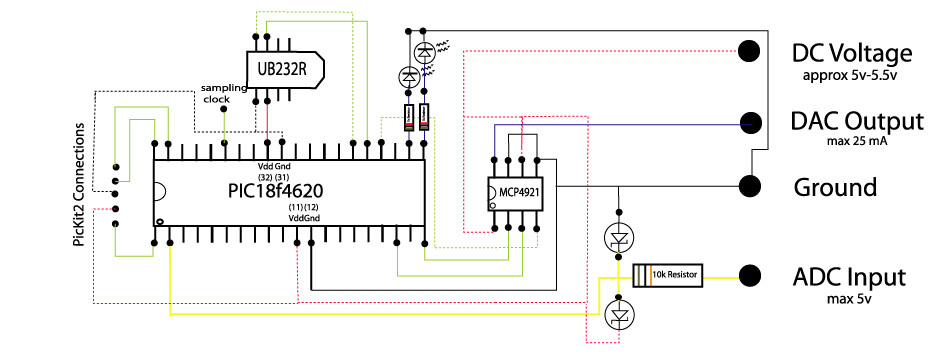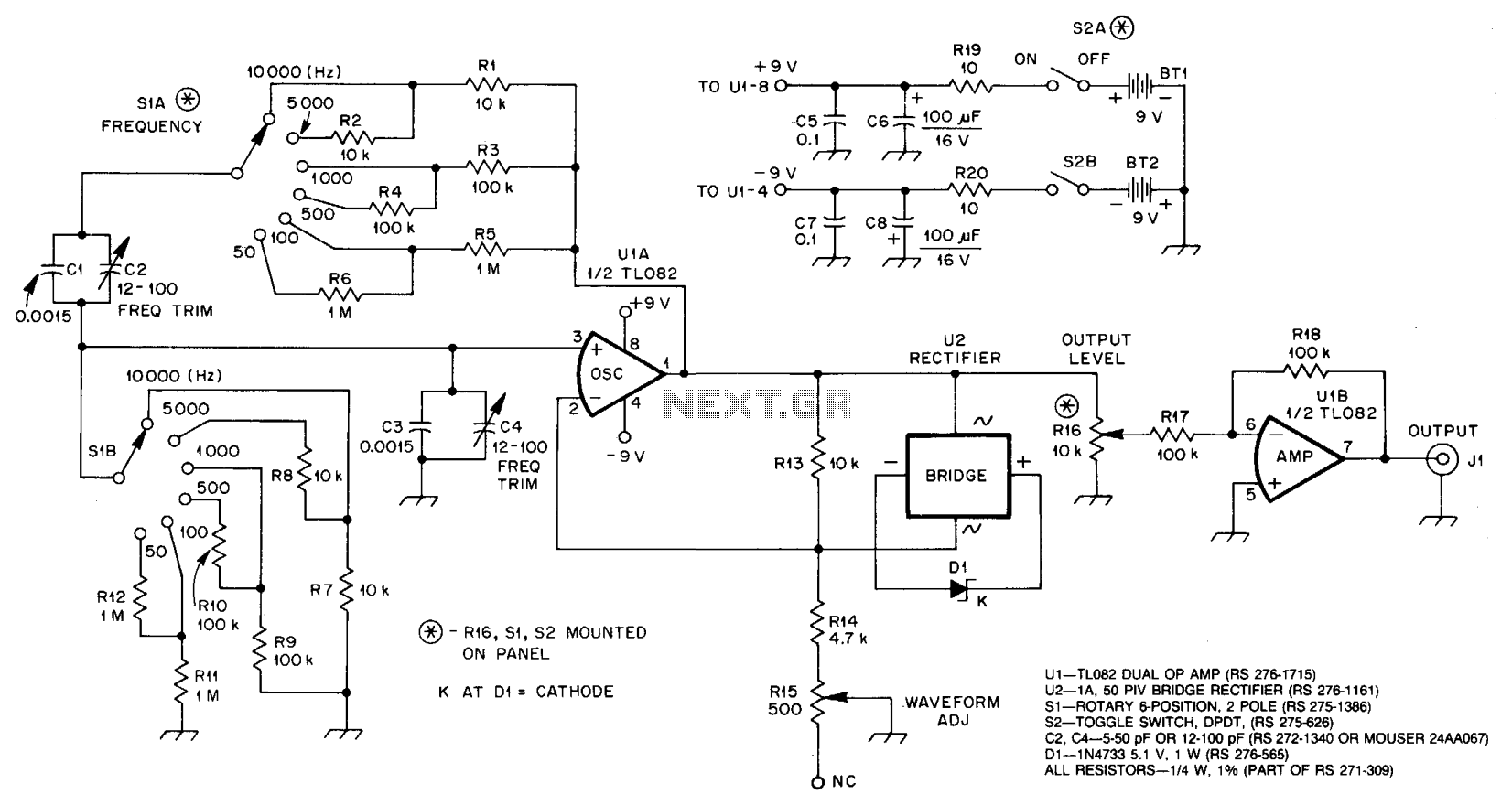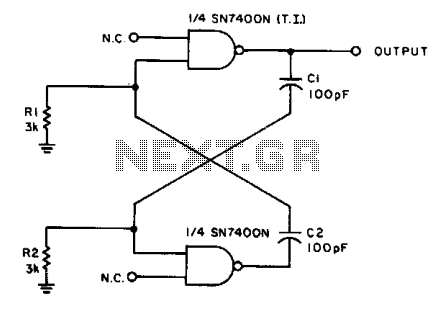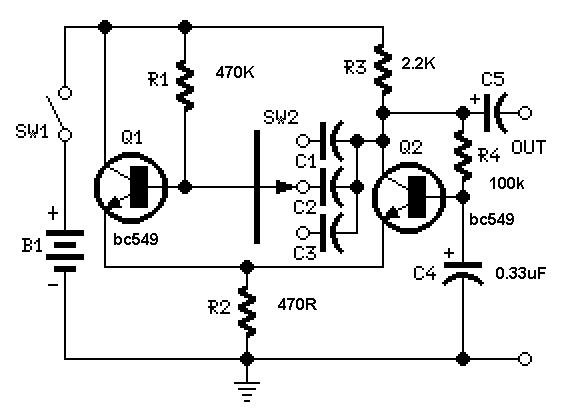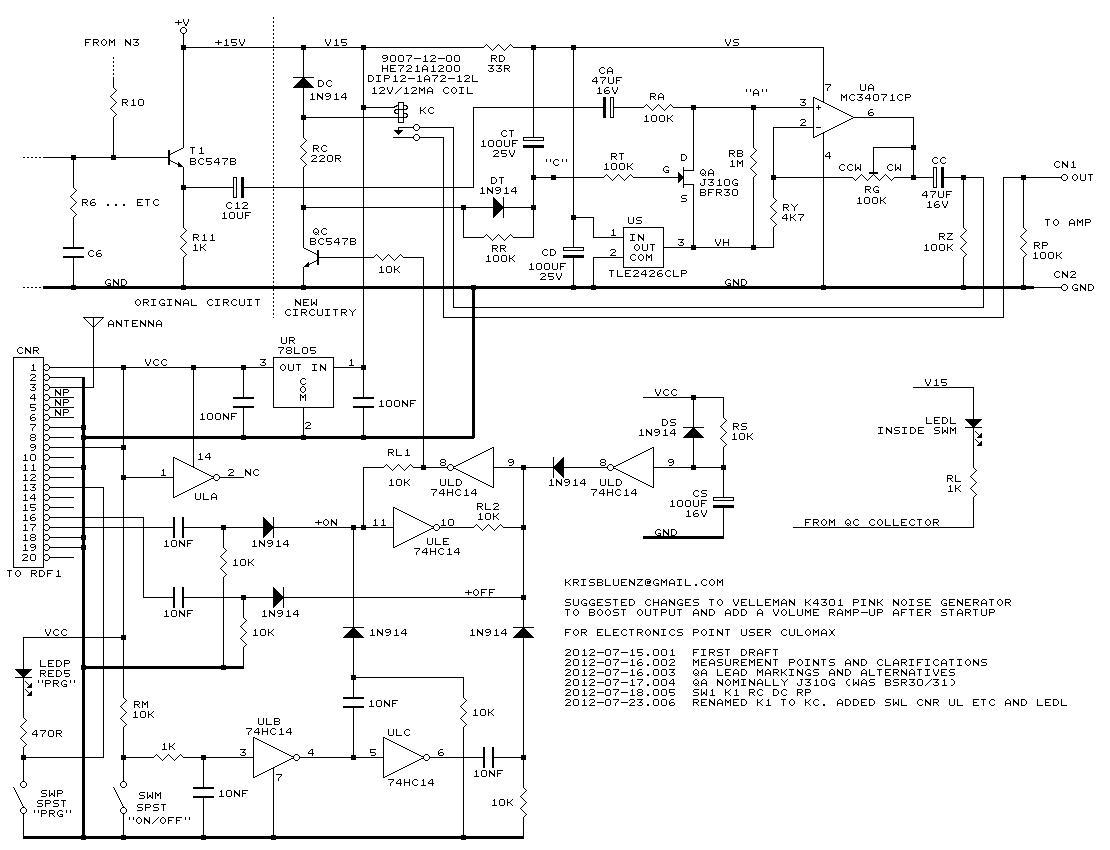
Triangle and Squarewave Generator by IC 40106
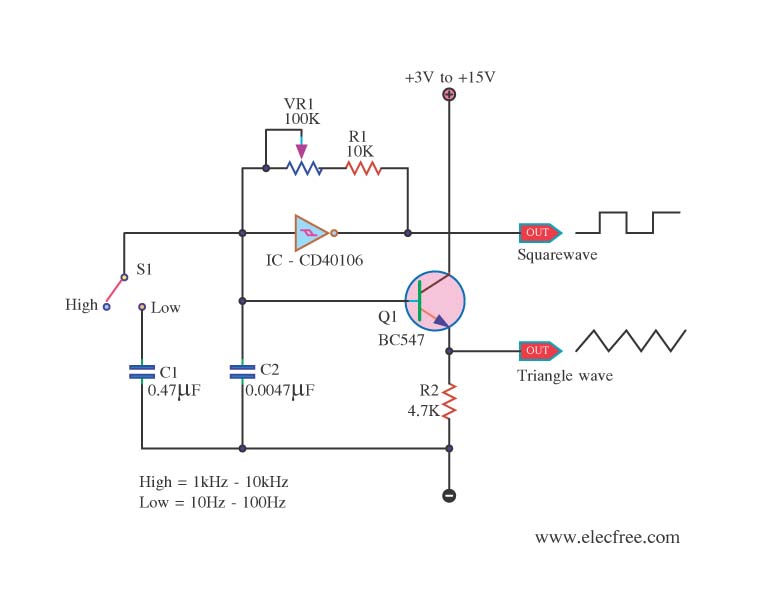
This is a circuit function generator that produces triangle and square wave signals. It utilizes an IC 40106 and a BC547 transistor. The variable resistor VR1 is used to control the frequency output, while switch S3 serves as a selector.
The circuit function generator is designed to create two types of waveforms: triangle and square waves, which are commonly used in various electronic applications such as signal processing, testing, and waveform generation. The heart of the circuit is the IC 40106, a Schmitt trigger inverter that provides the necessary switching characteristics for generating these waveforms.
The configuration of the circuit involves connecting the IC 40106 in a feedback loop to form an oscillator. The output of the inverter is fed back to its input through a resistor-capacitor (RC) network, which determines the frequency of oscillation. The capacitor's charge and discharge times create the triangular waveform, while the sharp transitions of the Schmitt trigger produce the square wave.
The BC547 transistor is employed to amplify the output signals, ensuring that the generated waveforms can drive other components or circuits effectively. The variable resistor VR1 allows for fine-tuning of the frequency output by adjusting the resistance in the RC network, providing flexibility in waveform generation.
Switch S3 is implemented to select between the triangle and square wave outputs, enabling the user to choose the desired waveform for their specific application. This selector switch facilitates easy operation and enhances the versatility of the circuit.
Overall, this circuit function generator serves as a valuable tool for engineers and hobbyists alike, providing reliable waveform generation with adjustable frequency and selectable output types.This is circuit Function Generater,Triangle and Squarewave Generator. Use IC 40106 and Transistor BC547. VR1 For Control frequency Output. S3 to Seclector. 🔗 External reference
The circuit function generator is designed to create two types of waveforms: triangle and square waves, which are commonly used in various electronic applications such as signal processing, testing, and waveform generation. The heart of the circuit is the IC 40106, a Schmitt trigger inverter that provides the necessary switching characteristics for generating these waveforms.
The configuration of the circuit involves connecting the IC 40106 in a feedback loop to form an oscillator. The output of the inverter is fed back to its input through a resistor-capacitor (RC) network, which determines the frequency of oscillation. The capacitor's charge and discharge times create the triangular waveform, while the sharp transitions of the Schmitt trigger produce the square wave.
The BC547 transistor is employed to amplify the output signals, ensuring that the generated waveforms can drive other components or circuits effectively. The variable resistor VR1 allows for fine-tuning of the frequency output by adjusting the resistance in the RC network, providing flexibility in waveform generation.
Switch S3 is implemented to select between the triangle and square wave outputs, enabling the user to choose the desired waveform for their specific application. This selector switch facilitates easy operation and enhances the versatility of the circuit.
Overall, this circuit function generator serves as a valuable tool for engineers and hobbyists alike, providing reliable waveform generation with adjustable frequency and selectable output types.This is circuit Function Generater,Triangle and Squarewave Generator. Use IC 40106 and Transistor BC547. VR1 For Control frequency Output. S3 to Seclector. 🔗 External reference
